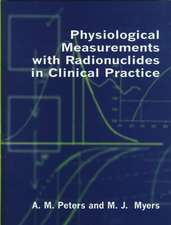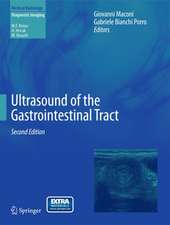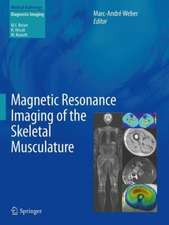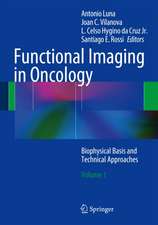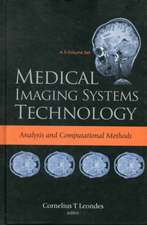Vortex Formation in the Cardiovascular System
Autor Arash Kheradvar, Gianni Pedrizzettien Limba Engleză Paperback – 16 apr 2014
| Toate formatele și edițiile | Preț | Express |
|---|---|---|
| Paperback (1) | 772.96 lei 6-8 săpt. | |
| SPRINGER LONDON – 16 apr 2014 | 772.96 lei 6-8 săpt. | |
| Hardback (1) | 1092.99 lei 6-8 săpt. | |
| SPRINGER LONDON – feb 2012 | 1092.99 lei 6-8 săpt. |
Preț: 772.96 lei
Preț vechi: 813.63 lei
-5% Nou
Puncte Express: 1159
Preț estimativ în valută:
147.95€ • 160.76$ • 124.36£
147.95€ • 160.76$ • 124.36£
Carte tipărită la comandă
Livrare economică 21 aprilie-05 mai
Preluare comenzi: 021 569.72.76
Specificații
ISBN-13: 9781447162339
ISBN-10: 1447162331
Pagini: 180
Ilustrații: XIV, 166 p.
Dimensiuni: 155 x 235 x 9 mm
Greutate: 0.27 kg
Ediția:2012
Editura: SPRINGER LONDON
Colecția Springer
Locul publicării:London, United Kingdom
ISBN-10: 1447162331
Pagini: 180
Ilustrații: XIV, 166 p.
Dimensiuni: 155 x 235 x 9 mm
Greutate: 0.27 kg
Ediția:2012
Editura: SPRINGER LONDON
Colecția Springer
Locul publicării:London, United Kingdom
Public țintă
Professional/practitionerCuprins
I - Fundamental Fluid Mechanics.- 1. Fluids and solids, blood and tissues.- 2. Conservation of mass.- 3. Conservation of momentum and Bernoulli theorem.- 4. Conservation of momentum and viscosity.- 5. Boundary layer and wall shear stress.- 6. Simple flows and concepts of cardiovascular interest.- References to Part I.- II - Vortex Dynamics.- 7. Definitions.- 8. Dynamics of vorticity.- 9. Boundary layer separation.- 10. Vortex formation.- 11. Three-dimensional vortex formation.- 12. Energy loss and force of vortex formation.- 13. Vortex interactions.- 14. A mention to turbulence.- References to Part II.- III – Cardiac Vortex Formation.- 15. Mitral valve and transmitral flow.- 16. Aortic valve, Sinuses of Valsalva, and Aortic Artery.- 17. Vortex formation in the right heart .- 18. Circulatory areas in the developing hearth.- 19. Linking Cardiac Muscle Funtion to Vortex Formation.- 20. Effect of Left Ventricular Diseases on Vortex Formation.- References to Part III.- IV - Effect of Cardiac Devices and Surgery on Vortex Formation.- 21. Vortex Formation in Bioprostheses.- 22. Vortex Formation in Mechanical Heart Valves.- 23. Vortical flow in Ventricular Assist Devices
24. Vortex Formation due to Arterial Surgery and Anastomosis .-References to Part IV.- V - Diagnostic Vortex imaging.- 25. MRI.- 26. Echocardiography.- 27. In vitro Experiments.- 28. Numerical simulations.- References to Part V
24. Vortex Formation due to Arterial Surgery and Anastomosis .-References to Part IV.- V - Diagnostic Vortex imaging.- 25. MRI.- 26. Echocardiography.- 27. In vitro Experiments.- 28. Numerical simulations.- References to Part V
Textul de pe ultima copertă
Vortex formation has received much attention over the past few years. Vortices occur in nature wherever propulsive flow exists; from erupting volcanoes to the ones generated by squid and jellyfish to propel them. There has been particular interest in the wide variety of vortices that develop in the cardiovascular system, particularly in the cardiac chambers and in large arteries. These vortices play fundamental roles in the normal physiology and provide proper balance between blood motion and stresses on the surrounding tissues. In contrast, formation of unnatural vortices may alter the momentum transfer in the blood flow and increase energy dissipation.Vortex Formation in the Cardiovascular System reviews the current knowledge of vortex formation, from the basic physics to cardiac physiology. There is a particular focus on the formation of vortices at different locations inside the heart, the effect of cardiac devices and surgery on vortex formation, fluid dynamics of the artificial heart valves and ventricular assist devices. The Authors have translated physical, mathematical and engineering concepts related to vortex formation into a clinical perspective with the objective to advance cardiovascular patient care.This book therefore represents a comprehensive and valuable resource for those involved in the field of cardiology and cardiovascular physiology, cardiovascular surgeons, interventional cardiologists, medical bioengineers and researchers in fluid mechanics.
Caracteristici
Mathematical definitions understandable for the reader without the advanced mathematical background, while an interested reader with more advanced knowledge in mathematics can be referred to references for further quantitative analyses Valuable support for physicians in the evaluation of vortex influence on diagnosis and therapeutic choices Attracts the theoretical interest and can address the physiological or clinical concerns
Descriere
Descriere de la o altă ediție sau format:
Mathematical definitions understandable for the reader without the advanced mathematical background, while an interested reader with more advanced knowledge in mathematics can be referred to references for further quantitative analyses Valuable support for physicians in the evaluation of vortex influence on diagnosis and therapeutic choices Attracts the theoretical interest and can address the physiological or clinical concerns Vortex formation has received much attention over the past few years. Vortices occur in nature wherever propulsive flow exists; from erupting volcanoes to the ones generated by squid and jellyfish to propel them. There has been particular interest in the wide variety of vortices that develop in the cardiovascular system, particularly in the cardiac chambers and in large arteries. These vortices play fundamental roles in the normal physiology and provide proper balance between blood motion and stresses on the surrounding tissues. In contrast, formation of unnatural vortices may alter the momentum transfer in the blood flow and increase energy dissipation. Vortex Formation in the Cardiovascular System reviews the current knowledge of vortex formation, from the basic physics to cardiac physiology. There is a particular focus on the formation of vortices at different locations inside the heart, the effect of cardiac devices and surgery on vortex formation, fluid dynamics of the artificial heart valves and ventricular assist devices. The Authors have translated physical, mathematical and engineering concepts related to vortex formation into a clinical perspective with the objective to advance cardiovascular patient care. This book therefore represents a comprehensive and valuable resource for those involved in the field of cardiology and cardiovascular physiology, cardiovascular surgeons, interventional cardiologists, medical bioengineers and researchers in fluid mechanics.
Mathematical definitions understandable for the reader without the advanced mathematical background, while an interested reader with more advanced knowledge in mathematics can be referred to references for further quantitative analyses Valuable support for physicians in the evaluation of vortex influence on diagnosis and therapeutic choices Attracts the theoretical interest and can address the physiological or clinical concerns Vortex formation has received much attention over the past few years. Vortices occur in nature wherever propulsive flow exists; from erupting volcanoes to the ones generated by squid and jellyfish to propel them. There has been particular interest in the wide variety of vortices that develop in the cardiovascular system, particularly in the cardiac chambers and in large arteries. These vortices play fundamental roles in the normal physiology and provide proper balance between blood motion and stresses on the surrounding tissues. In contrast, formation of unnatural vortices may alter the momentum transfer in the blood flow and increase energy dissipation. Vortex Formation in the Cardiovascular System reviews the current knowledge of vortex formation, from the basic physics to cardiac physiology. There is a particular focus on the formation of vortices at different locations inside the heart, the effect of cardiac devices and surgery on vortex formation, fluid dynamics of the artificial heart valves and ventricular assist devices. The Authors have translated physical, mathematical and engineering concepts related to vortex formation into a clinical perspective with the objective to advance cardiovascular patient care. This book therefore represents a comprehensive and valuable resource for those involved in the field of cardiology and cardiovascular physiology, cardiovascular surgeons, interventional cardiologists, medical bioengineers and researchers in fluid mechanics.

